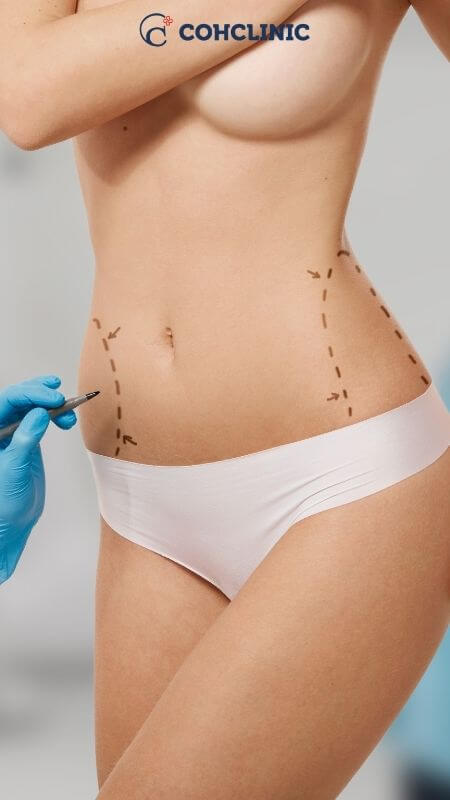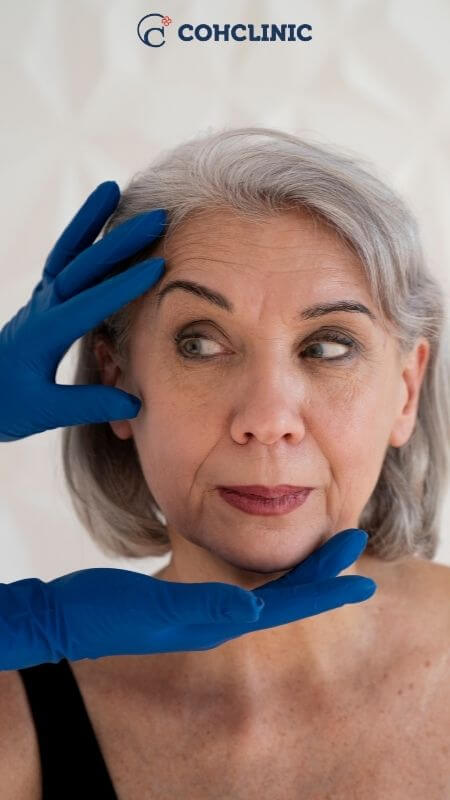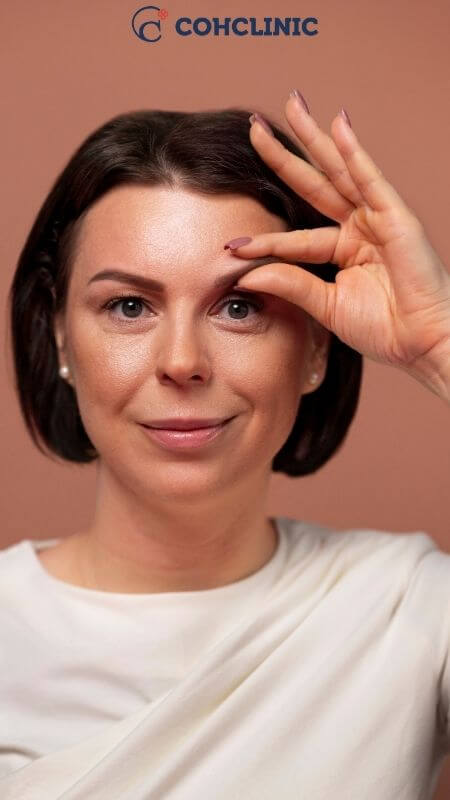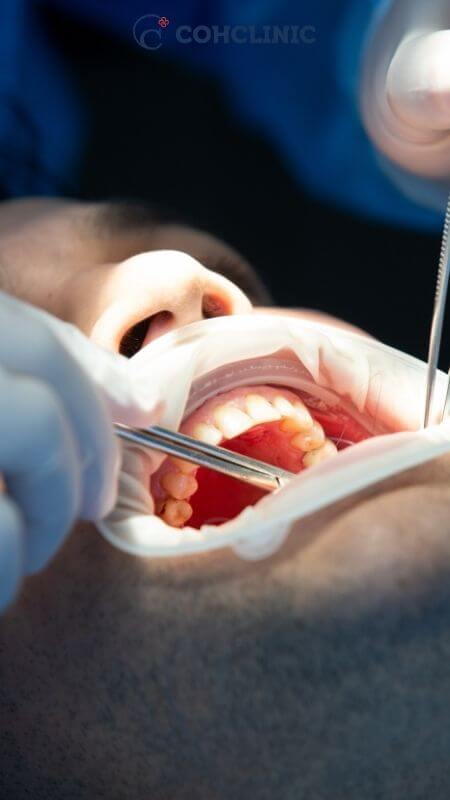Turbinoplasty, a surgical procedure aimed at addressing issues related to nasal turbinates, plays a vital role in enhancing breathing and overall quality of life for individuals struggling with nasal obstruction.
The turbinates are structures within the nasal passageway that can enlarge due to various factors such as allergies, environmental irritants, infections, or anatomical abnormalities, causing discomfort and obstructed airflow. In this article, we will explore what turbinoplasty surgery entails, who may benefit from it, its potential pros and cons, and the recovery process.
What is Turbinoplasty surgery?
Turbinoplasty is a surgical procedure used to address issues related to the nasal turbinates, which are structures located inside the nasal passages. The turbinates are responsible for humidifying and filtering the air we breathe by increasing its surface area. But as the turbinates expand, they can lead to nasal blockage, breathing problems, and other nose symptoms. To enhance nasal airflow and relieve these symptoms, turbinoplasty helps shrink turbinates.
There are different techniques and approaches to turbinoplasty, including;
- Inferior Turbinoplasty: This is the most common form of turbinoplasty. It involves reducing the size of the inferior turbinate, which is the lowermost turbinate. The surgeon may use various methods, such as submucosal resection (removing a portion of the turbinate’s tissue), radiofrequency ablation (using controlled heat to shrink the turbinate tissue), or other minimally invasive techniques.
- Middle Turbinoplasty: In some cases, the middle turbinate may also contribute to nasal obstruction. Middle turbinoplasty involves addressing enlargement or blockage in this region.
- Laser Turbinoplasty: This technique utilizes lasers to reduce the size of the turbinates. It can be less invasive than traditional surgical methods and may offer a quicker recovery.
- Cauterization: Electrocautery or chemical cauterization can be used to shrink the turbinates by creating controlled tissue damage, which leads to scar tissue formation and decreased turbinate size.
The surgeon’s experience and the particular condition of the patient influence the procedure selection.
What makes turbinates enlarge?
You’re not the only one who has swollen turbinates and is thinking about treatments. Turbinate hypertrophy has a variety of reasons, such as:
- Allergies
- Environmental irritants
- Changes in temperature
- Hormonal changes
- Infections
- Tumors
- Sinus infections
- Medication side effects
Who needs turbinoplasty?
When kids have trouble breathing through their noses, turbinate surgery is typically beneficial. If your nose’s turbinates are very big and obstruct your nasal airways, you could need one of these operations.
Pros and Cons of Turbinate Reduction

Pros:
- a quick recovery after an outpatient operation
- Improves nasal breathing and airflow, which reduces snoring and sleep apnea and leads to better sleep
- assists in treating allergies
- improves quality of life in general
Cons:
- days-long congestion and edema following the operation
- possibility of persistent nasal dryness
- increased risk of bleeding from the nose
- minor possibility of scarring
Is turbinoplasty worth it?
The satisfaction percentage for turbinate surgery ranges from 82% to 96%, and it is often quite safe. It is possible for a surgeon to accidentally remove too much turbinate tissue, which would exacerbate breathing difficulties by drying up the nasal passages.
What are the risks of turbinoplasty?
Although turbinate surgery is often risk-free, there are certain dangers. The primary danger is that the turbinates won’t be able to warm and humidify the air you breathe because too much tissue has been removed. The end effect is a painful, permanently dry, crusty nose.
How is turbinate surgery done?
There are no visible cuts or wounds made during turbinate surgery since it is done via the nostrils. It is carried out using telescopes and tiny devices. Under a general anesthetic, it is done.
It is frequently a day-case operation, depending on what other surgeries are being done at the same time.
The surgery’s goal is to lower the turbinate’s size to improve nasal airflow. This is done while keeping the turbinate’s mucosa lining intact to preserve function.
Turbinate Surgery Preparation and Aftercare
Inform your healthcare provider of the following at all times:
- if you’re pregnant or think you could be
- Which medications you are taking, including over-the-counter meds, dietary supplements, and herbal remedies
- If you consume more than a couple of alcoholic beverages each day
Before your procedure, on the following days:
- You could be instructed to stop using aspirin, ibuprofen (Advil, Motrin), naproxen (Aleve, Naprosyn), clopidogrel (Plavix), warfarin (Coumadin), and any other medications that prevent your blood from clotting.
- What medications should you continue to take the day before your surgery? Ask your doctor.
The day of your procedure:
- The night before your operation, you will be instructed to abstain from eating and drinking after midnight.
- With a little sip of water, take the prescribed medications.
- When to show up at the hospital will be communicated by your surgeon.
After the procedure:
Many people get effective short-term alleviation after radio ablation. Numerous patients still report better breathing and the recurrence of nasal blockage problems two years after the treatment.
Almost of patients who have turbinoplasty with a microdebrider continue to breathe well three years following surgery. Some people are no longer in need of nasal medications.
How long does it take to recover from turbinate reduction surgery?
Fortunately, as the effects of the anesthetic wear off, all patients are allowed to go home. However, the length of total recovery varies from patient to patient.
Some individuals can resume their regular activities the day after their surgery. Others must wait two weeks before returning to jobs, school, or exercise. However, recovery and return to a normal lifestyle might take anything from three days to a week.
Remember to take your prescribed medications, desist from excessive activity, stop blowing your nose, and elevate your head to reduce pressure to speed up your recovery. On the first day following your operation, you should notice a substantial improvement in your breathing!
What is the difference between Turbinoplasty and turbinectomy?
Turbinates are intricate bony structures that embellish the interior of your nasal cavity. These structures are extremely important in your respiratory system. They function by warming, filtering, and humidifying the air that enters your nasal canal. Three pairs of these turbinates divide your nasal cavity into four independent air channels, which then lead to the sinuses nestled behind each cheekbone. The most significant pair, known as the inferior turbinates, are bigger than the other pairs since they are in charge of air filtering when you breathe via your nose. The mucus that is secreted by the skin covering these turbinates helps to warm and humidify the air as it passes through the nose. The turbinates, however, may occasionally expand to the point where they restrict the free passage of air via your nose.
Although usually unharmful, this growth must be removed to allow uninterrupted breathing to return. Snoring and, in more severe cases, sleep apnea can be brought on by a significant nasal obstruction over time. While it is true that some people naturally have bigger turbinates, a considerable percentage of sleep apnoea sufferers are found to have excessively large turbinates. Even when awake, breathing problems might result from an enlarged turbinate.

The surgical procedure known as a turbinectomy involves the removal of turbinates. This operation, which might be partial or comprehensive, focuses mainly on removing the inferior turbinate. It is regarded as being more extreme than turbinoplasty.
Turbinoplasty is a little less invasive operation in which the size of the turbinates is decreased instead of eliminated. In comparison, both operations aim to reduce symptoms brought on by enlarged turbinates, including nasal congestion, snoring, and breathing problems. These operations make it simpler to breathe and help you sleep better, which can significantly enhance your quality of life.
Breathe More Conveniently With Turbinoplasty
A higher quality of life and easier breathing are both possible with turbinoplasty. Although each patient recovers at a different pace, many report that their breathing has already improved the day after the treatment. Turbinoplasty can provide important relief to people looking for improved nasal airflow and an overall higher quality of life with the correct knowledge and direction.
To entrust yourself to the best turbinoplasty surgeons in Istanbul, call us at +90 (536) 934 6524 and let us help you breathe more easily.
Frequently Asked Questions
Why do people get turbinoplasty?
Why do people get turbinoplasty?
To improve breathing, extra tissue surrounding your turbinate bones is removed during turbinate reduction surgery.
What is the difference between septoplasty and turbinoplasty?
What is the difference between septoplasty and turbinoplasty?
A septoplasty straightens your septum to allow for proper airflow through both sides of your nose. This procedure is performed by an ear, nose, and throat surgeon. When doing a turbinoplasty, the objective is to decrease the turbinates just enough to facilitate nasal drainage and ventilation while yet leaving enough tissue for appropriate turbinate function.
Do turbinates grow back?
Do turbinates grow back?
It is crucial that the turbinate not be entirely removed since doing so might lead to a very dry, crusty nose. Turbinates often warm and humidify breathed air. Sometimes after turbinate surgery, turbinate tissue will come again, necessitating a repeat operation.
Is it bad to remove turbinates?
Is it bad to remove turbinates?
Turbinate reduction surgery aims to reduce the size of the turbinates while minimizing tissue removal. Insufficient turbinate tissue might result in a highly dry and crusty nasal cavity. A decreased turbinate may occasionally grow again, necessitating further operation to shrink it.
Is Turbinoplasty permanent?
Is Turbinoplasty permanent?
There is a chance that the turbinate will grow back to its former size because we don't completely remove it to prevent uncomfortable and challenging-to-treat problems. Surgery may, however, always be redone if required.
Can turbinoplasty change voice?
Can turbinoplasty change voice?
A surgical technique to remove nasal blockage called septoplasty with turbinoplasty may have an impact on voice quality and nasal resonance because it changes the resonance properties of the vocal tract.
How do you sleep after Turbinoplasty?
How do you sleep after Turbinoplasty?
Utilize three or four pillows to elevate your head when you sleep. This could lessen edema. Also possible is sleeping on a recliner chair.
How painful is a Turbinoplasty?
How painful is a Turbinoplasty?
Most of the time, there is no pain throughout the healing process, no bodily changes, and no long-term negative consequences, such as a loss of scent. It is necessary to let the patient know that the crusting on their nose will remain for around 3 weeks.







